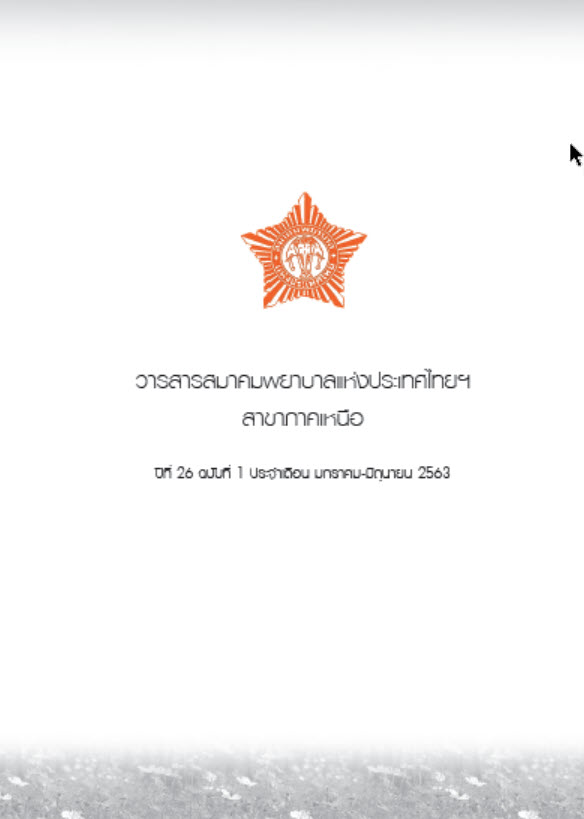การวิเคราะห์องค์ประกอบของแบบวัดพฤติกรรมการข่มเหงรังแก ในสถานศึกษาสำหรับนักเรียนมัธยมศึกษาตอนต้น
คำสำคัญ:
แบบวัดพฤติกรรมการข่มเหงรังแก, นักเรียนมัธยมศึกษาตอนต้นบทคัดย่อ
การวิจัยเชิงบรรยาย (Descriptive research) นี้ มีวัตถุประสงค์เพื่อพัฒนาและวิเคราะห์ องค์ประกอบแบบวัดพฤติกรรมการข่มเหงรังแกในสถานศึกษาสำหรับนักเรียนมัธยมศึกษาตอน ต้น กลุ่มตัวอย่างคือ นักเรียนชั้นมัธยมศึกษาตอนต้น จำนวน 370 คน ได้จากการสุ่มตัวอย่าง แบบหลายขั้นตอน (Multistage random sampling) เครื่องมือที่ใช้ในการวิจัย ได้แก่ แบบวัด พฤติกรรมการข่มเหงรังแกในสถานศึกษาสำหรับนักเรียนมัธยมศึกษาตอนต้น แบ่งออกเป็น พฤติกรรมการข่มเหงรังแกทางวาจา และ พฤติกรรมการข่มเหงรังแกทางร่างกาย เครื่องมือวิจัย ผ่านการตรวจสอบความตรงตามเนื้อหา ได้ค่า CVI เท่ากับ 0.92 ผ่านการตรวจสอบความเที่ยง โดยคำนวณหาค่าสัมประสิทธิ์สหสัมพันธ์ของครอนบาค ได้ เท่ากับ 0.91 นำข้อมูลมาวิเคราะห์ องค์ประกอบเชิงสำรวจ โดยวิธีการสกัดปัจจัยเพื่อหาองค์ประกอบหลัก หมุนแกนแบบ โอโทโกนอล ด้วยวิธีแวริแมกซ์
ผลการวิจัยพบว่า แบบวัดพฤติกรรมการข่มเหงรังแกในสถานศึกษาประกอบด้วย พฤติกรรมการข่มเหงรังแกทางวาจา มีจำนวน 18 ข้อ มีค่าน้ำหนักปัจจัยระหว่าง 0.38-0.72 และสามารถอธิบายความแปรปรวนได้ร้อยละ 57.47 แบ่งเป็น 4 องค์ประกอบ ได้แก่ 1) ด้าน การพูดข่มขู่ มี 4 ตัวบ่งชี้ 2) ด้านการพูดเยาะเย้ย มี 6 ตัวบ่งชี้ 3) ด้านการพูดหยาบคาย มี 4 ตัว บ่งชี้ และ 4) ด้านการพูดเหยียดหยาม มี 4 ตัวบ่งชี้ โดยมีค่าความแปรปรวน ร้อยละ 35.23, 9.34, 7.28 และ 5.60 ตามลำดับ และพฤติกรรมการข่มเหงรังแกทางร่างกาย มีจำนวน 21 ข้อ มีค่าน้ำหนักปัจจัยระหว่าง 0.46-0.69 และ สามารถอธิบายความแปรปรวนได้ร้อยละ ร้อยละ 53.84 แบ่งออกเป็น 4 องค์ประกอบ ได้แก่ 1) ด้านการละเมิดความเป็นส่วนตัว มี 7 ตัวบ่งชี้ 2) ด้านการก่อความรำคาญ มี 5 ตัวบ่งชี้ 3) ด้านทำให้สูญเสียความเป็นตัวของตัวเอง มี 5 ตัวบ่งชี้และ 4) ด้านการทำให้เกิดความหวาดกลัว อับอาย มี 4 ตัวบ่งชี้ โดยมีค่าความแปรปรวนร้อยละ 37.04, 6.81, 5.10 และ 4.89 ตามลำดับ
จากผลการศึกษาดังกล่าว บุคลากรที่เกี่ยวข้องในสถานศึกษาหรือหน่วยงานบริการสุขภาพ สามารถนำแบบวัดพฤติกรรมการข่มเหงรังแกในสถานศึกษาสำหรับนักเรียนมัธยมศึกษาตอนต้น ไป ศึกษาระดับพฤติกรรมการข่มเหงรังแกในสถานศึกษาของนักเรียนในระดับมัธยมศึกษาตอนต้นที่อาจ จะเกิดขึ้น เพื่อช่วยเหลือและป้องกันไม่ให้เกิดความรุนแรงในสถานศึกษาต่อไป
เอกสารอ้างอิง
กรอบบุญ ภาวะกุลและปราโมทย์ สุคนิชย์. การศึกษาพฤติกรรมรังแกข่มขู่กับระดับความรู้สึกมีคุณค่า ในตน เองในโรงเรียนมัธยมศึกษาแห่งหนึ่งกรุงเทพมหานคร. วารสารสมาคมจิตแพทย์แห่งประเทศไทย. 2554; 56: 35-4.
เกษตรชัย และหีม. พฤติกรรมการรังแกกันของนักเรียน. วิทยาสารเกษตรศาสตร์ สาขาสังคมศาสตร์. 2554;32:158–66.
เกษตรชัย และหีม และ อุทิศ สังขรัตน์. การพัฒนาแบบคัดกรองพฤติกรรมเสี่ยงต่อการรังแกผู้อื่นของ นักเรียนโรงเรียนเอกชนสอนศาสนาอิสลามในจังหวัดสงขลา. สงขลา: มหาวิทยาลัยสงขลา นครินทร์; 2554.
เกษตรชัย และหีม. สภาพปัญหาการคัดกรองและป้องกันพฤติกรรมเสี่ยงต่อการรังแกผู้อื่นของนักเรียน โรงเรียนเอกชนสอนศาสนาอิสลามในจังหวัดยะลา. วารสารปาริชาติ. 2560; 30: 169-92.
กัลยกร คูณเจริญ และ ประไพพรรณ ภูมิวุฒิสาร. ความสัมพันธ์ระหว่างการทำหน้าที่ของครอบครัว ความร่วมรู้สึกและ บรรทัดฐานของกลุ่มเพื่อนกับพฤติกรรมการข่มเหงรังแกผู้อื่นในนักเรียนชั้นประถม ศึกษาปีที่ 4-6. วารสารสมาคมส่งเสริมการวิจัย. 2554; 3: 7-19
ชุตินาถ ศักรินทร์กุล และ อลิสา วัชรสินธุ. ความชุกของการข่มเหงรังแกและปัจจัย ด้านจิตสังคมที่เกี่ยว ข้องในเด็กมัธยมต้น เขตอำเภอเมือง จังหวัดเชียงใหม่. วารสารสมาคมจิตแพทย์แห่งประเทศไทย. 2557; 59: 221-30.
ธิดารัตน์ ปุรณะชัยศีรี, สิรินัดดา ปัญญาภาส และ ฐิตวี แก้วพรสวรรค์. กลยุทธ์ในการ แก้ปัญหาการ ถูกรังแกของเด็กนักเรียน ระดับชั้นประถมศึกษาตอนปลาย. วารสารสมาคมจิตแพทย์แห่งประเทศไทย. 2558; 60(4): 275-86.
นันทกฤต โรตมนันทกฤต. พฤติกรรมการสื่อสารข้ามวัฒนธรรมกับการข่มเหงรังแกในสถานศึกษา.ปริญญา นิเทศศาสตรมหาบัณฑิต สาขาวิชานิเทศศาสตร์ คณะนิเทศศาสตร์: จุฬาลงกรณ์มหาวิทยาลัย; 2556.
พัชราภรณ์ ศรีสวัสดิ์ วิไลลักษณ์ ลังกา กัมปะนาท บริบูรณ์ และครรชิต แสนอุบล. การพัฒนารูปแบบ การป้องกันการข่มเหงรังแกในโรงเรียน. Veridian E-Journal, Silpakorn University. 2561; 11(1): 1906–3431
ศุภรดา ชุมพาลี และ ทัศนา ทวีคูณ. พฤติกรรมรังแกกันของนักเรียนชั้นมัธยมศึกษาตอนต้น ของ จังหวัดหนึ่งในภาคกลาง ประเทศไทย. วารสารการพยาบาลจิตเวชและสุขภาพจิต, 2562; 33(3): 128-48
ศุภรัตน์ เอกอัศวิน และ จอมสุรางค์ โพธิสัตย์. ความชุกของประสบการณ์รังแกและโรคร่วมจิตเวชใน นักเรียนไทย. วารสารสุขภาพจิตแห่งประเทศไทย. 2560; 25(2): 69-106.
สกล วรเจริญศรี. การข่มเหงรังแก. สารานุกรมศึกษา(Encyclopedia of Education) คณะศึกษาศาสตร์ มหาวิทยาลัยศรีนคินทร์วิโรฒ. 2559; 51: 13–20.
สมบัติ ตาปัญญา. รายงานการสำรวจปัญหาการรังแกกันของนักเรียน. เชียงใหม่: คณะแพทยศาสตร์ มหาวิทยาลัยเชียงใหม่; 2549.
Langan Pual. Bullying in Schools: What you need to know. New Jersey: Townsend Press Inc.; 2011.
Strout, T.D., Vessey, J.A., Difazio, R.L., Ludlow, L.H. The Child Adolescent Bullying Scale (CABS): Psychometric evaluation of a new measure. Research in Nursing and Health. 2018; 41: 1-13.
ดาวน์โหลด
เผยแพร่แล้ว
รูปแบบการอ้างอิง
ฉบับ
ประเภทบทความ
สัญญาอนุญาต
บทความที่ได้รับการตีพิมพ์เป็นลิขสิทธิ์ของสมาคมพยาบาลแห่งประเทศไทยฯ สาขาภาคเหนือ
เนื้อหาและข้อคิดเห็นใดๆ ที่ตีพิมพ์ในวารสารสมาคมพยาบาลฯ ถือเป็นความรับผิดชอบของผู้เขียนเท่านั้น ผู้เขียนบทความต้องศึกษารายละเอียดหลักเกณฑ์การจัดทำต้นฉบับตามที่วารสารกำหนด และเนื้อหาส่วนภาษาอังกฤษต้องได้รับการตรวจสอบจากเจ้าของภาษามาแล้ว


